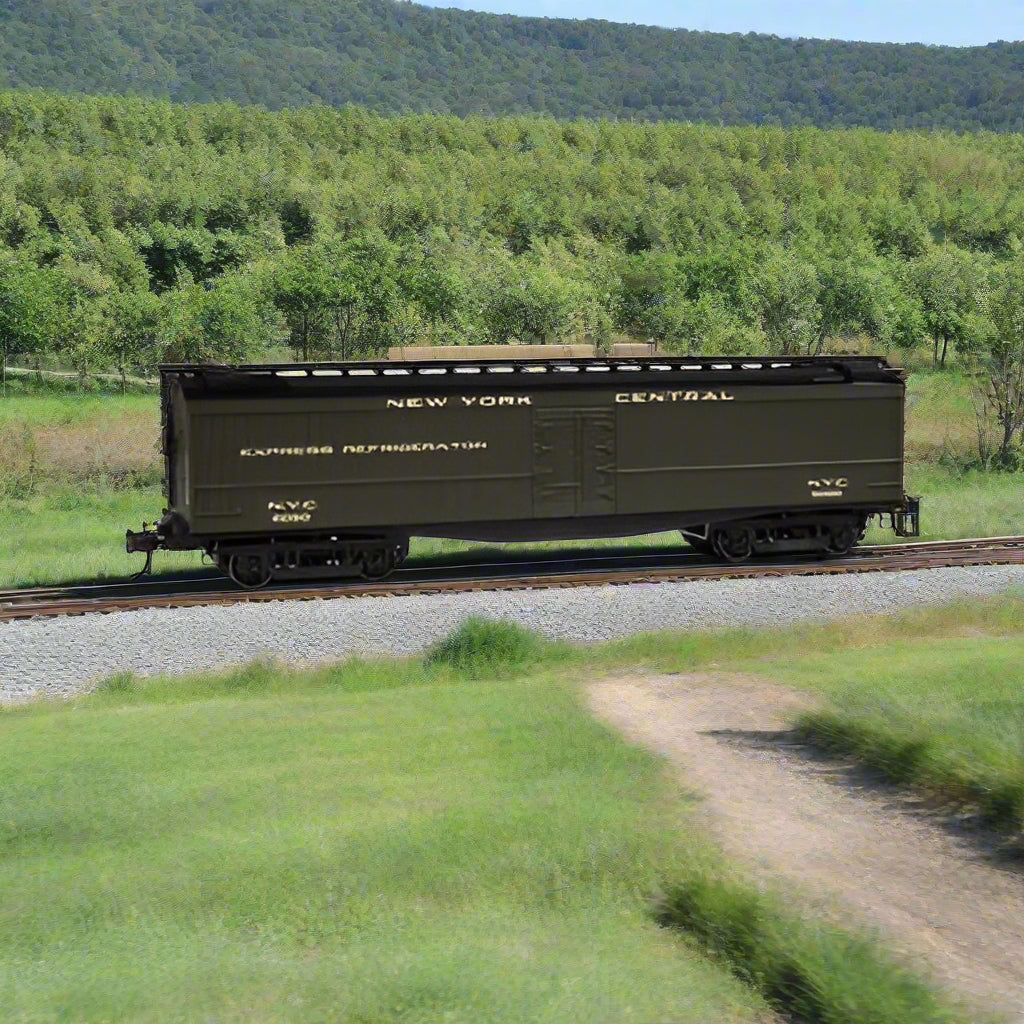
Bachmann, 75702, HO Scale, 50' Express Reefer, New York Central, #6090
- In stock, ready to ship
50' Express Wooden Reefer
About the Prototype:
In the bustling world of early 20th-century railroads, the Wood Express Reefer emerged as a groundbreaking innovation that transformed the transportation of perishable goods. First introduced in the mid-19th century, these wooden refrigerated railcars revolutionized the industry by offering a way to keep cargo cool and fresh over long distances. Before their advent, fresh produce grown in the fertile lands of the west often spoiled before reaching markets in the east, leaving regions disconnected from the bounty of their counterparts. This was a problem crying out for a solution.
The answer came in the form of these innovative refrigerated express cars, ingeniously designed with insulated interiors and cooling systems to maintain low temperatures. Equipped with passenger-speed trucks, the Wood Express Reefer was not only a technical achievement but also an invaluable tool for farmers, merchants, and consumers alike. With these cars attached to passenger trains, the produce industry entered a golden age, reshaping diets and economies across North America. Now, an orange from California could grace the breakfast table of a New Yorker, while fresh fish from the east coast made its way inland—all within a fraction of the time once considered impossible.
The placement of these cars in priority passenger trains tells a story in itself. Positioned at the head end of the train, ahead of baggage cars and passengers, they symbolized the urgency of their cargo. Railroads understood that these reefers carried more than fruits, vegetables, or meats—they carried promises of connection and possibility, bridging geographic divides and delivering slices of the world to communities far and wide.
This practice also showcased the adaptability of railroads during this era. With innovative minds and engineering prowess, rail transportation evolved to meet the demands of a changing society. However, by the mid-20th century, wooden reefers faced increasing competition from their more durable, efficient steel counterparts. The transition to steel reefers began in the 1950s, allowing for improved refrigeration systems and greater longevity. By the 1960s, most wooden reefers had been phased out, though a few remained in specialized roles into the early 1970s.
Though the era of the wooden reefer eventually came to an end, its legacy endures as a symbol of a transformative time in transportation history. The Wood Express Reefer was not just a car; it was an ambassador of modernity, linking farms with cities and creating a sense of interdependence that reshaped the way people viewed the world. Its role in history reminds us of how logistics and technology can drive societal change, one refrigerated shipment at a time.
About the Model:
Features include:
Highly detailed painted bodies with precision graphics
Blackened machined metal wheels with RP25 contours
Magnetically operated E-Z Mate Mark II couplers
Non-magnetic blackened brass axles with needlepoint bearings
Celcon trucks



